Nozer D. Singpurwalla9780470855027, 0470855029
Table of contents :
Reliability and Risk……Page 4
Contents……Page 10
Preface……Page 16
Acknowledgements……Page 18
1.1 Preamble: What do ‘Reliability’, ‘Risk’ and ‘Robustness’ Mean?……Page 20
1.3 Reliability, Risk and Survival: State-of-the-Art……Page 22
1.4 Risk Management: A Motivation for Risk Analysis……Page 23
1.5 Books on Reliability, Risk and Survival Analysis……Page 25
1.6 Overview of the Book……Page 26
2.1 Uncertain Quantities and Uncertain Events: Their Definition and Codification……Page 28
2.2 Probability: A Satisfactory Way to Quantify Uncertainty……Page 29
2.2.1 The Rules of Probability……Page 30
2.2.2 Justifying the Rules of Probability……Page 31
2.3 Overview of the Different Interpretations of Probability……Page 32
2.3.1 A Brief History of Probability……Page 33
2.3.2 The Different Kinds of Probability……Page 35
2.4 Extending the Rules of Probability: Law of Total Probability and Bayes’ Law……Page 38
2.4.3 Bayes’ Law: The Incorporation of Evidence and the Likelihood……Page 39
2.5 The Bayesian Paradigm: A Prescription for Reliability, Risk and Survival Analysis……Page 41
2.6 Probability Models, Parameters, Inference and Prediction……Page 42
2.6.1 The Genesis of Probability Models and Their Parameters……Page 43
2.6.2 Statistical Inference and Probabilistic Prediction……Page 45
2.7 Testing Hypotheses: Posterior Odds and Bayes Factors……Page 46
2.7.1 Bayes Factors: Weight of Evidence and Change in Odds……Page 47
2.7.2 Uses of the Bayes Factor……Page 49
2.7.3 Alternatives to Bayes Factors……Page 50
2.8.1 Utility as a Probability……Page 51
2.8.3 Attitudes to Risk: The Utility of Money……Page 52
2.9.1 The Decision Tree……Page 53
2.9.2 The Influence Diagram……Page 54
3.1 Introduction to Exchangeability: de Finetti’s Theorem……Page 64
3.1.2 Relationship between Independence and Exchangeability……Page 65
3.1.3 de Finetti’s Representation Theorem for Zero-one Exchangeable Sequences……Page 67
3.1.4 Exchangeable Sequences and the Law of Large Numbers……Page 68
3.2 de Finetti-style Theorems for Infinite Sequences of Non-binary Random Quantities……Page 69
3.2.2 Invariance Conditions Leading to Mixtures of Other Distributions……Page 70
3.3.1 Bounds for Finitely Extendable Zero-one Random Quantities……Page 74
3.3.2 Bounds for Finitely Extendable Non-binary Random Quantities……Page 75
4.2 Preliminaries: Univariate, Multivariate and Multi-indexed Distribution Functions……Page 78
4.3 The Predictive Failure Rate Function of a Univariate Probability Distribution……Page 81
4.3.1 The Case of Discontinuity……Page 84
4.4 Interpretation and Uses of the Failure Rate Function – the Model Failure Rate……Page 85
4.4.2 Decreasing Failure Rates, Reliability Growth, Burn-in and the Bathtub Curve……Page 88
4.4.3 The Retrospective (or Reversed) Failure Rate……Page 93
4.5.1 The Hazard Gradient……Page 95
4.5.2 The Multivariate Failure Rate Function……Page 96
4.5.3 The Conditional Failure Rate Functions……Page 97
4.6 The Hazard Potential of Items and Individuals……Page 98
4.6.1 Hazard Potentials and Dependent Lifelengths……Page 100
4.6.2 The Hazard Gradient and Conditional Hazard Potentials……Page 102
4.7.1 Preliminaries: Bivariate Distributions……Page 104
4.7.2 The Bivariate Exponential Distributions of Gumbel……Page 108
4.7.3 Freund’s Bivariate Exponential Distribution……Page 110
4.7.4 The Bivariate Exponential of Marshall and Olkin……Page 112
4.7.5 The Bivariate Pareto as a Failure Model……Page 126
4.7.6 A Bivariate Exponential Induced by a Shot-noise Process……Page 129
4.7.8 Other Specialized Bivariate Distributions……Page 134
4.8.1 Probabilistic Causality and Causal Failures……Page 136
4.8.2 Cascading and Models of Cascading Failures……Page 137
4.9.1 Model Development……Page 139
4.9.2 A Failure Model Indexed by Two Scales……Page 142
5.1 Introduction and Perspective……Page 144
5.2.1 The Exponential as a Chance Distribution……Page 146
5.2.2 The Weibull (and Gamma) as a Chance Distribution……Page 147
5.2.3 The Bernoulli as a Chance Distribution……Page 148
5.2.4 The Poisson as a Chance Distribution……Page 152
5.2.5 The Generalized Gamma as a Chance Distribution……Page 154
5.3 Prior Distributions in Chance Distributions……Page 155
5.3.1 Eliciting Prior Distributions via Expert Testimonies……Page 156
5.3.2 Using Objective (or Default) Priors……Page 160
5.4 Predictive Distributions Incorporating Failure Data……Page 163
5.4.1 Design Strategies for Industrial Life-testing……Page 164
5.4.2 Stopping Rules: Non-informative and Informative……Page 166
5.4.3 The Total Time on Test……Page 168
5.4.4 Exponential Life-testing Procedures……Page 169
5.4.5 Weibull Life-testing Procedures……Page 174
5.4.6 Life-testing Under the Generalized Gamma and the Inverse Gaussian……Page 175
5.4.7 Bernoulli Life-testing Procedures……Page 176
5.4.8 Life-testing and Inference Under the BVE……Page 178
5.5.1 Preliminaries: Entropy and Information……Page 180
5.5.2 Learning for Inference from Life-test Data: Testing for Confidence……Page 183
5.5.3 Life-testing for Decision Making: Acceptance Sampling……Page 185
5.6 Optimal Testing: Design of Life-testing Experiments……Page 189
5.7 Adversarial Life-testing and Acceptance Sampling……Page 192
5.8.1 Formulating Accelerated Life-testing Problems……Page 194
5.8.2 The Kalman Filter Model for Prediction and Smoothing……Page 196
5.8.3 Inference from Accelerated Tests Using the Kalman Filter……Page 198
5.8.4 Designing Accelerated Life-testing Experiments……Page 202
6.1 Introduction: Hierarchical Models……Page 206
6.2 ‘Composite Reliability’: Partial Exchangeability……Page 207
6.2.1 Simulating Exchangeable and Partially Exchangeable Sequences……Page 208
6.2.2 The Composite Reliability of Ultra-reliable Units……Page 209
6.2.3 Assessing Reliability and Composite Reliability……Page 211
6.3 Signature Analysis and Signatures as Covariates……Page 212
6.3.2 Bayesian Assessment of the Power Spectrum……Page 214
6.3.3 A Hierarchical Bayes Assessment of the Power Spectrum……Page 217
6.3.4 The Spectrum as a Covariate Using an Accelerated Life Model……Page 219
6.3.5 Closing Remarks on Signatures and Covariates……Page 221
7.1 Introduction: Why Stochastic Hazard Functions?……Page 224
7.2 Hazard Rate Processes……Page 225
7.2.1 Hazard Rates as Shot-noise Processes……Page 226
7.2.2 Hazard Rates as Lévy Processes……Page 227
7.2.3 Hazard Rates as Functions of Diffusion Processes……Page 229
7.3 Cumulative Hazard Processes……Page 230
7.3.2 The Cumulative Hazard as an Increasing Lévy Process……Page 232
7.3.3 Cumulative Hazard as Geometric Brownian Motion……Page 233
7.3.4 The Cumulative Hazard as a Markov Additive Process……Page 234
7.4 Competing Risks and Competing Risk Processes……Page 237
7.4.1 Deterministic Competing Risks……Page 238
7.4.2 Stochastic Competing Risks and Competing Risk Processes……Page 239
7.5 Degradation and Aging Processes……Page 241
7.5.2 Specifying Degradation Processes……Page 242
8.1 Introduction: What is Event History?……Page 246
8.2.1 Multiple Failure Modes and Competing Risks……Page 248
8.2.3 Units Experiencing Maintenance and Repair……Page 250
8.2.4 Life-testing Under Censorship and Withdrawals……Page 252
8.3.1 Multivariate Counting and Intensity Processes……Page 253
8.4 Dynamic Processes and Statistical Models: Martingales……Page 255
8.4.1 Decomposition of Continuous Time Processes……Page 257
8.4.2 Stochastic Integrals and a Martingale Central Limit Theorem……Page 258
8.5 Point Processes with Multiplicative Intensities……Page 259
9.1 The What and Why of Non-parametric Bayes……Page 262
9.2 The Dirichlet Distribution and its Variants……Page 263
9.2.2 The Generalized Dirichlet – Concept of Neutrality……Page 265
9.3 A Non-parametric Bayes Approach to Bioassay……Page 266
9.3.1 A Prior for Potency……Page 267
9.3.2 The Posterior Potency……Page 268
9.4.1 Independent Beta Priors on Piecewise Constant Hazards……Page 269
9.4.2 The Extended Gamma Process as a Prior……Page 270
9.5.1 Neutral to the Right Probabilities and Gamma Process Priors……Page 272
9.5.2 Beta Process Priors for the Cumulative Hazard……Page 274
9.6 Priors for the Cumulative Distribution Function……Page 278
9.6.1 The Dirichlet Process Prior……Page 279
9.6.2 Neutral to the Right-prior Processes……Page 283
10.1.1 Overview of the Chapter……Page 288
10.2 Coherent Systems and their Qualitative Properties……Page 289
10.2.1 The Reliability of Coherent Systems……Page 293
10.3 The Survivability of Coherent Systems……Page 300
10.3.1 Performance Processes and their Driving Processes……Page 301
10.3.2 System Survivability Under Hierarchical Independence……Page 302
10.3.3 System Survivability Under Interdependence……Page 303
10.3.4 Prior Distributions on the Unit Hypercube……Page 305
10.4 Machine Learning Methods in Survivability Assessment……Page 310
10.4.1 An Overview of the Neural Net Methodology……Page 311
10.4.2 A Two-phased Neural Net for System Survivability……Page 312
10.5.1 The Decision Theoretic Formulation……Page 313
10.5.2 Reliability Apportionment for Series Systems……Page 315
10.5.3 Reliability Apportionment for Parallel Redundant Systems……Page 316
10.5.5 Apportioning Reliability Under Interdependence……Page 317
10.6 The Utility of Reliability: Optimum System Selection……Page 318
10.6.1 Decision-making for System Selection……Page 319
10.6.2 The Utility of Reliability……Page 320
10.7 Multi-state and Vague Stochastic Systems……Page 322
10.7.1 Vagueness or Imprecision……Page 323
10.7.3 Consistency Profiles and Probabilities of Vague Sets……Page 324
10.7.5 Reliability of Systems in Vague Binary States……Page 326
10.7.6 Concluding Comments on Vague Stochastic Systems……Page 327
11.1 Introduction and Overview……Page 328
11.2.1 Some Metrics of Reliability and Survival……Page 329
11.2.2 Metrics of Income Inequality……Page 330
11.2.3 Relating the Metrics……Page 332
11.2.5 Lorenz Curve Analysis of Failure Data……Page 334
11.3.1 Asset Pricing of Risk-free Bonds: An Overview……Page 336
11.3.2 Re-interpreting the Exponentiation Formula……Page 338
11.3.3 A Characterization of Present Value Functions……Page 339
11.3.4 Present Value Functions Under Stochastic Interest Rates……Page 344
11.4 Inferential Issues in Asset Pricing……Page 347
11.4.2 A Strategy for Pooling Present Value Functions……Page 348
11.4.3 Illustrative Example: Pooling Present Value Functions……Page 350
11.5 Concluding Comments……Page 351
A.1 The Gibbs Sampling Algorithm……Page 354
B.1 Preliminaries: Trigonometric Functions……Page 358
B.2 Orthogonality of Trigonometric Functions……Page 359
B.3 The Fourier Representation of a Finite Sequence of Numbers……Page 360
B.4 Fourier Series Models for Time Series Data……Page 361
B.4.1 The Spectrum and the Periodgram of f(t)……Page 362
C.2 Re-assessing Testimonies of Experts Who have Vanished……Page 364
C.3 The Paradox in Two Dimensions……Page 365
C.4 The Paradox in Network Survivability Assessment……Page 366
Bibliography……Page 368
Index……Page 384


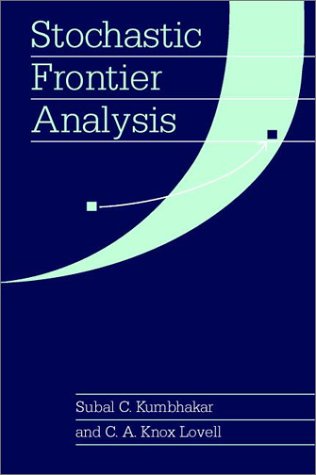
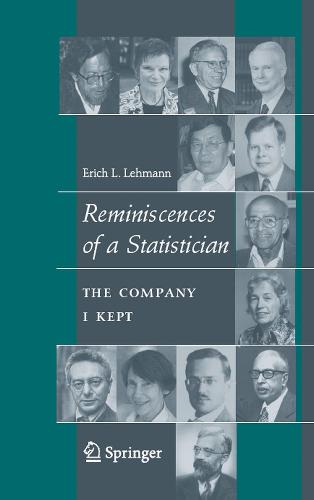
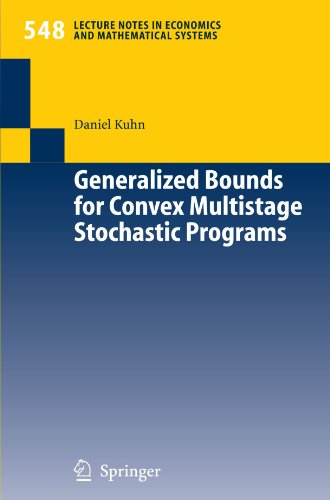
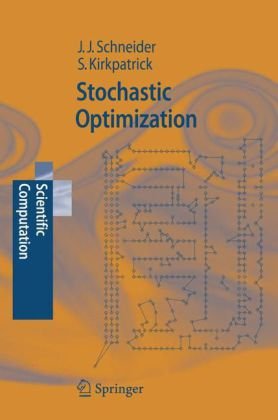
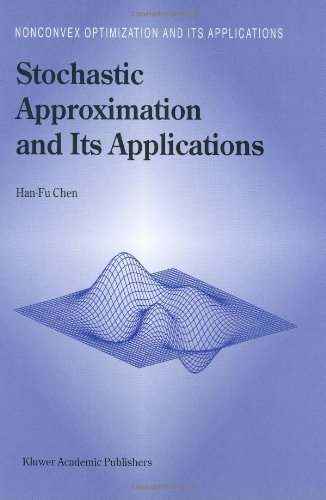
Reviews
There are no reviews yet.